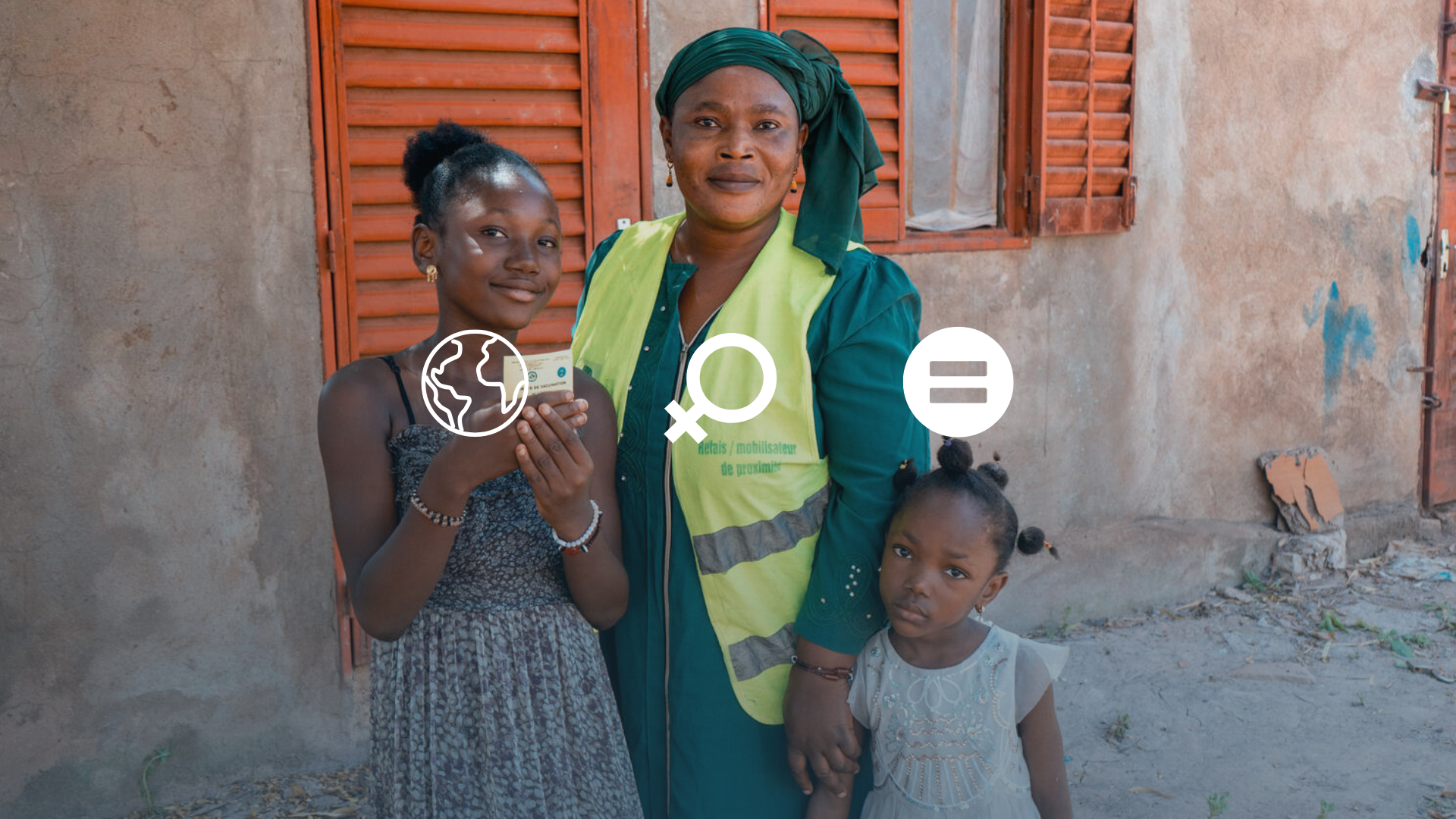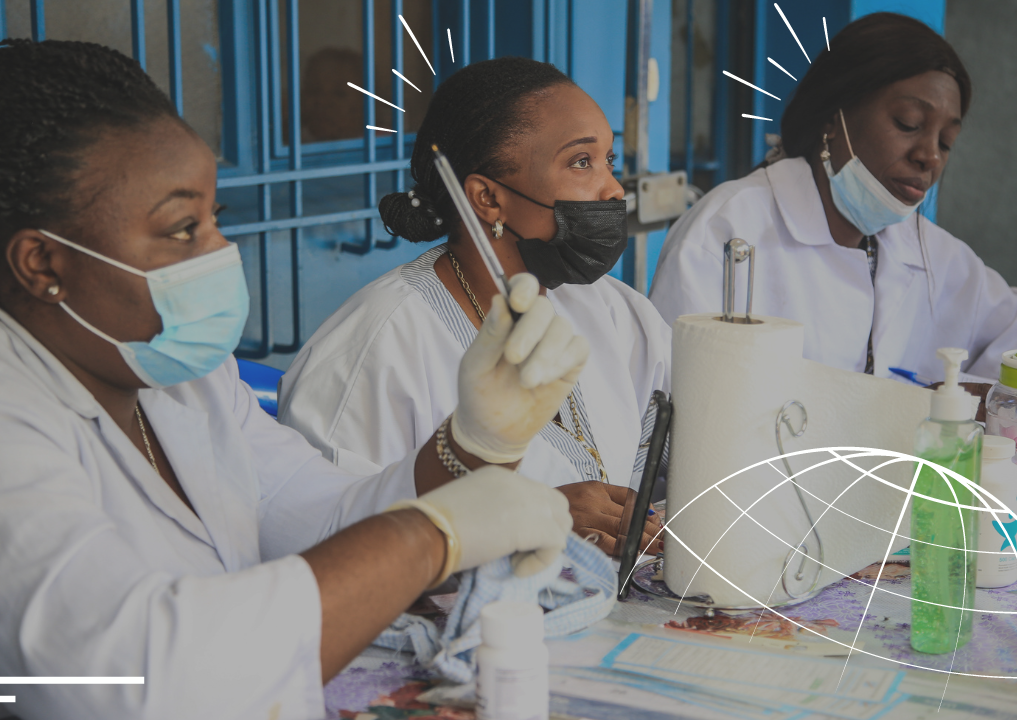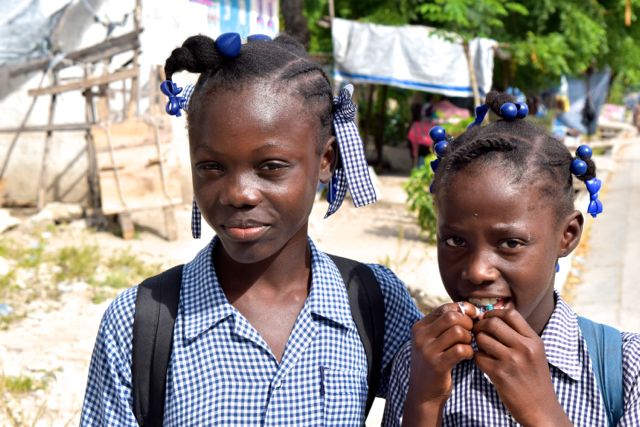From Childhood to Motherhood: Gender Equity and Immunization
Women face significant barriers to healthcare while simultaneously making up the backbone of the global health workforce. But there is a solution: empowering women through equitable vaccine access can be a catalyst for change in both global health and gender equality.

With “equity,” “inclusion,” “gender equality,” and even “equal access” entering the sphere of perceived buzz words today, it can feel hard to breach these topics.
But the reality is, global health cannot be discussed without addressing the layers of disparity beneath it.
The duality is stark, but simple: women face unique challenges when it comes to healthcare access, and yet, they also serve as the backbone of the health workforce. It is estimated that women provide essential health services for about 5 billion people worldwide (that’s more than the entire population of the Americas, Africa, and Europe combined!), constituting the majority of the health workforce. And the financial return of women’s work in global healthcare is estimated to be more than 3 trillion dollars. Every. Year.
It goes without saying that this contradictory role—being both the driving force behind healthcare and one of the groups most marginalized in receiving healthcare—deserves urgent attention. The inequitable access to vaccines for women across the life course represents a critical intersection of these challenges.
By addressing these disparities, we not only give girls the opportunity to grow into change-makers, but also ensure that women continue to have the support they need to sustain global health.
“Women hold up half the sky”—and yet, there is a gender imbalance on the ground
Medicines for Malaria Venture
From Girls to Women
Health inequalities affect everyone, but women and girls are often the hardest hit. Around the world, women face greater barriers to healthcare, from financial and cultural challenges to logistical issues that prevent them from receiving lifesaving care.
We are no stranger to the difficulties of expanding HPV vaccine uptake for young girls around the world, but there is a demographic facing even more barriers to vaccine access: pregnant women and their newborns. Pregnant women are often left out of vaccine trials—which we will delve into more later—and face heightened risks from disease exposure due to changes in their immune systems.
Some diseases that pose particular threats to pregnant people and their offspring include rubella, which can cause severe birth defects in developing fetuses if contracted during pregnancy; respiratory syncytial virus (RSV), which can cause severe complications for mothers and their infants; and malaria, a disease that overwhelmingly impacts infants and women of child-bearing age due to a reduced immunity to the malaria parasite.
But there is a bright side: all of these diseases and their subsequent complications are preventable by vaccine. The problem, then, is that these vaccines are not reaching the women who need them most. Why is that the case?
Across the Lifespan and the Vaccine Chain
The inequality in vaccine access felt by girls and women throughout their lives is not a standalone burden. Gender inequalities affect the entire vaccine value chain, from production to delivery, from supply to demand.

On the supply side, one example is the systemic exclusion of pregnant or lactating women from vaccine trials. Pregnancy alters a human’s metabolism, immune responses, and more, which has direct impacts on vaccine effectiveness. The recent uptick in Zika virus, H1N1, and Ebola is now shining a spotlight on the ways in which outbreaks can deeply affect the health interests and outcomes of pregnant women and their newborns. But despite increasing efforts to pursue maternal immunization strategies, there is still a pervasive and widespread exclusion of these populations in vaccine and biomedical research. This exclusion may have various causes, from ethical ambiguities in biomedical research with pregnant women—especially when emerging pathogens are involved—to overly cautious interpretations of what is allowed under research regulations. This gap in research creates a glaring oversight in vaccine supply, as public health crises often present disproportionate risks to pregnant women and neonates. When vaccines are not designed with these high-risk groups in mind, these groups are denied opportunities to receive protection from deadly diseases.
On the demand side of the vaccine ecosystem, the compounding issues of limited mobility (whether due to cultural or physical barriers), a lack of health education, and little autonomy over decision-making for mothers in many parts of the world inhibit vaccine uptake. For example, despite serving as the primary caregivers for children, many women may not have the autonomy to make choices about, first, pursuing vaccination at all, but second, utilizing the household resources needed to obtain immunization. In many instances, particularly in low- and middle-income countries, women must rely on men to provide transportation, treatment costs, and even simple permission to vaccinate their children. As such, empowering women in such settings can actually be a means to improve child health.
Vaccines as a Steppingstone
Access to interventions like the HPV vaccine, among others, isn’t just about health; it’s about opportunity. HPV is a virus that disproportionately impacts women by causing cervical cancer—the fourth most common cancer among women worldwide. But by improving HPV vaccination coverage, we can reduce the burden of cervical cancer, and in turn, reduce socioeconomic disparities. In fact, a 5% improvement in health from HPV vaccination translates into a 5.9% increase in female labor force participation.

When girls are vaccinated, they’re not just protected from cervical cancer—they’re free to focus on their education, careers, and goals without being held back by preventable diseases. A 2020 study from India’s Universal Immunization Program proved that childhood immunization was associated with improvements in educational attainment by as much as 10%, with corresponding benefits to future incomes.
Vaccination can be a steppingstone to a future where girls and women can have more economic autonomy and advocate for others who face barriers to accessing healthcare. In this way, the HPV vaccine becomes a tool of empowerment and breaking a longstanding cycle of inequity. This two-way relationship between gender equity and increased immunization coverage creates a mechanism to build a healthier world for all.
Empowering Women Furthers Global Health
The issue of inequitable vaccine access is deeply intertwined with the wider issue of gender inequality—both in health and beyond. Women, who serve as the majority of the healthcare workforce, deserve the same level of care and protection that they tirelessly provide to others from childhood to motherhood.
By ensuring that marginalized groups like pregnant women are included in clinical trials, and by ensuring that girls have access to lifesaving interventions like the HPV vaccine, we not only protect their health but also empower them to grow into the change-makers of tomorrow. We cannot let these inequities fall by the wayside; they must be addressed, for the health of girls, women, and the entire world.



